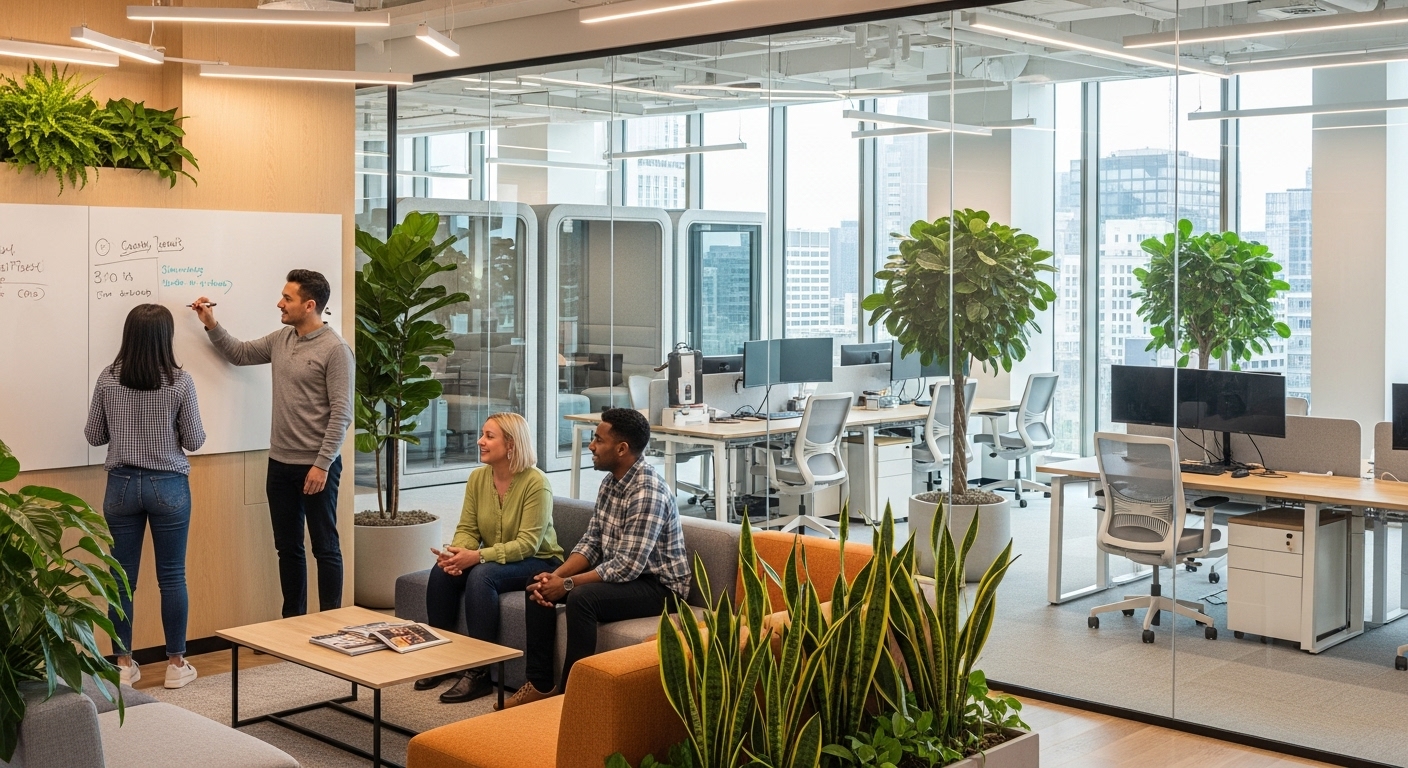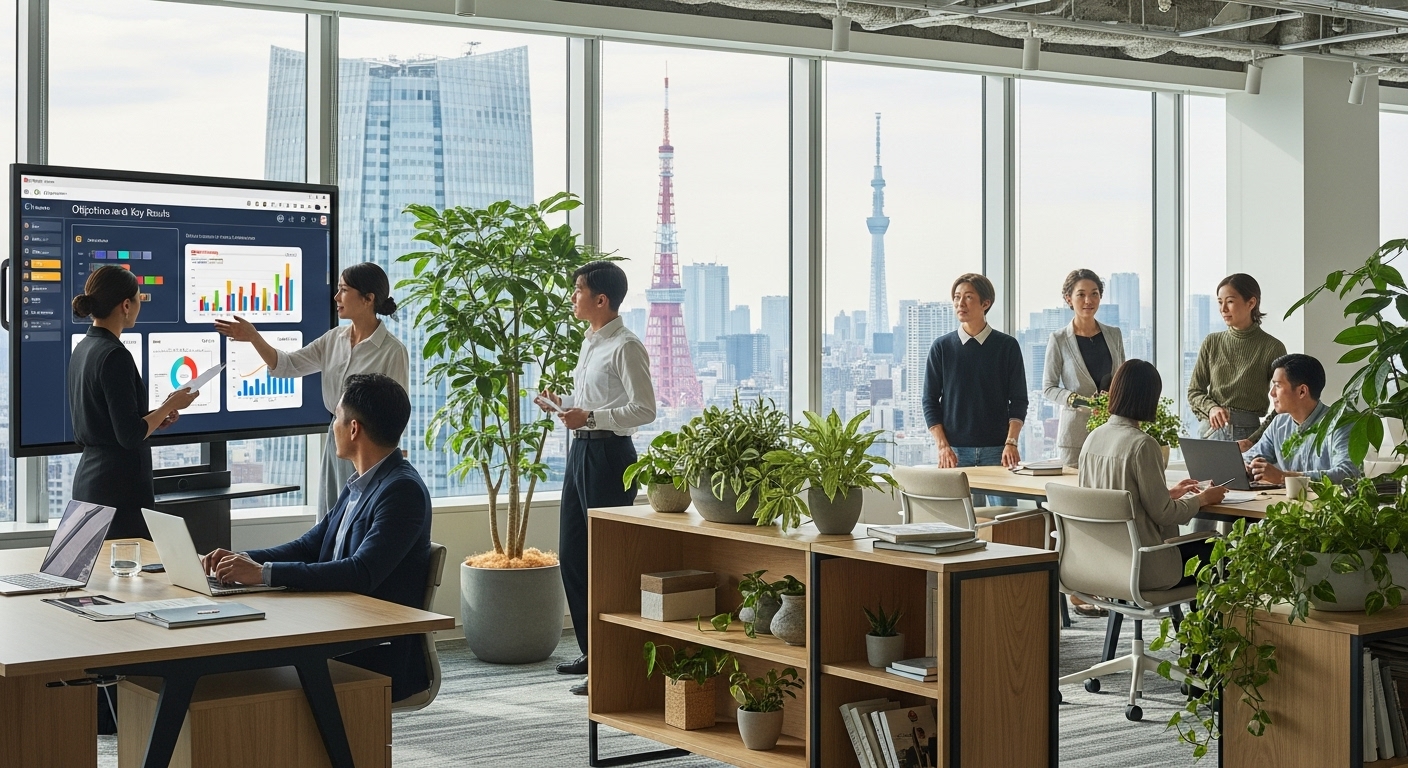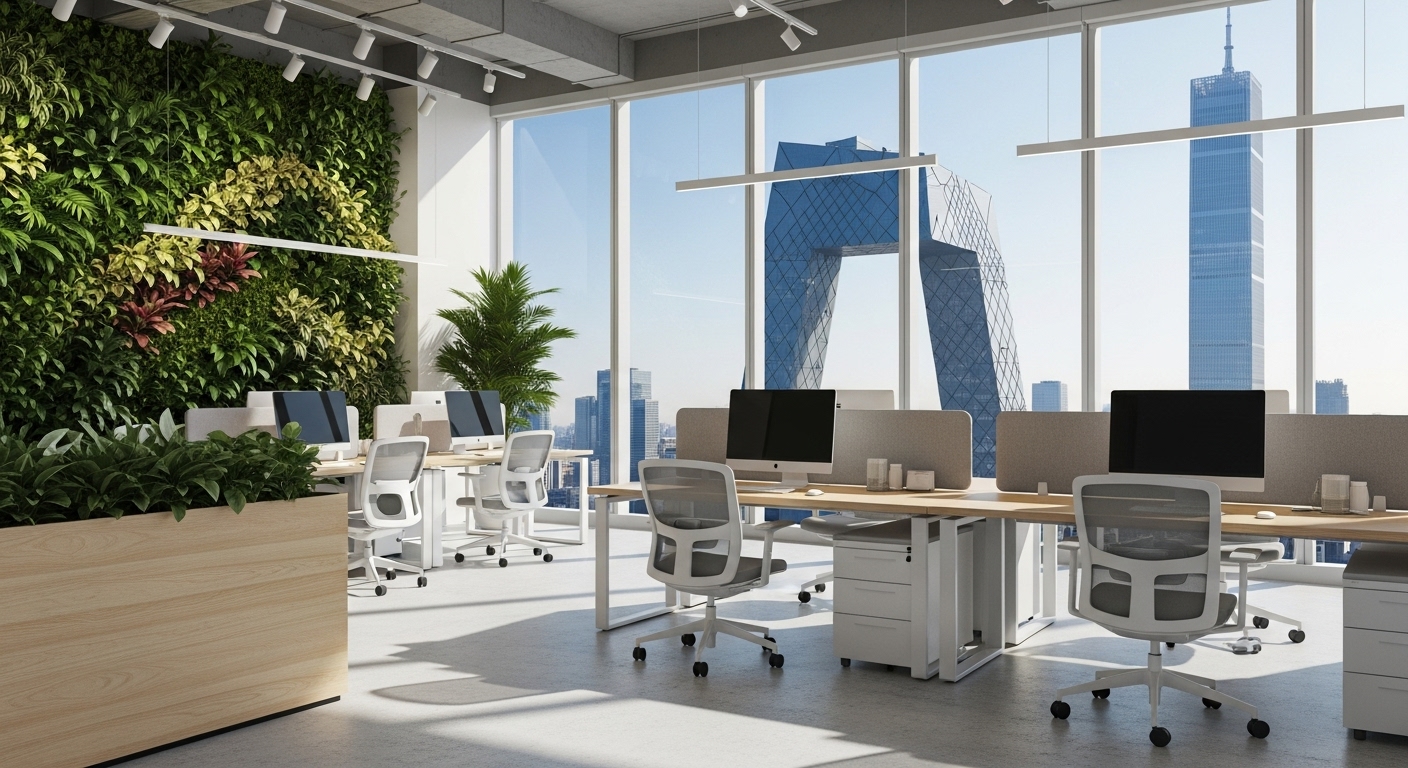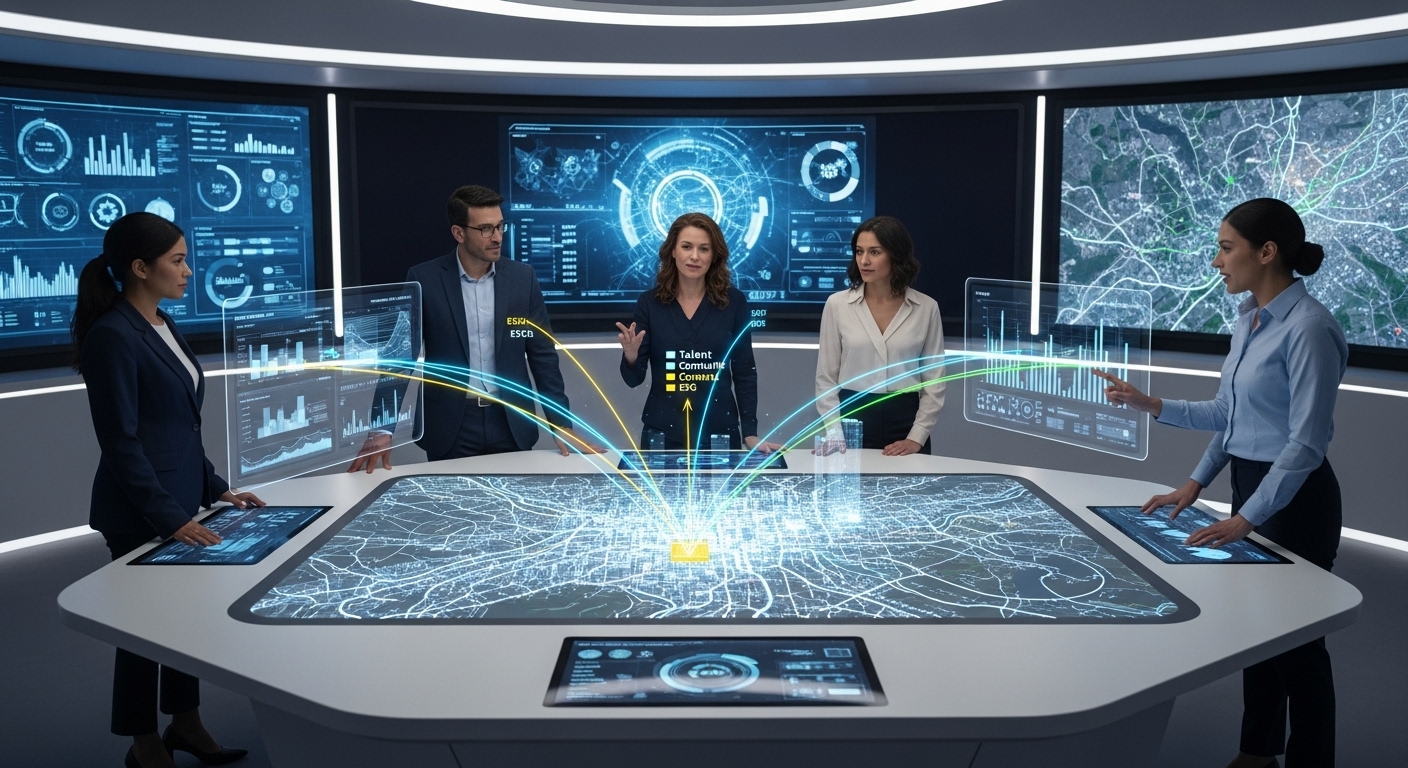The traditional checklist for choosing an office is obsolete. For decades, leaders relied on a simple formula: cost per square foot, location, and size. But in a world where remote and hybrid work have proven their viability, the office is no longer a default destination; it must be a compelling one. The new imperative is to create a workspace that earns the commute, shifting the focus from pure function to holistic feeling. This evolution demands a more human-centric approach, where the psychological and emotional impact of a space is weighed as heavily as its practical specifications. Today’s workspace strategy is less about containment and more about connection, community, and culture. It’s about designing an experience that employees can’t get from their home office. This guide will walk you through the modern criteria for selecting a workspace, moving beyond the outdated metrics to help you choose a space that fosters productivity, enhances well-being, and becomes a strategic asset in attracting and retaining top talent.
Decoding your team’s work signature
Before you even glance at a property listing, the most critical step is to look inward. You must deeply understand your team’s unique ‘work signature’—the distinct patterns of collaboration, focus, and social interaction that define their daily rhythm. The one-size-fits-all open-plan office often fails because it ignores the diverse needs of the people within it. Start by gathering data. This doesn’t have to be complex; simple surveys can reveal powerful insights. Ask your team what tasks they find easiest to do at home versus in the office. What parts of their work require deep, uninterrupted concentration? When do they need to spontaneously collaborate with colleagues? Analyzing this feedback will help you map out the essential ‘work modes’ your office needs to support. For instance, you might discover that your engineering team requires quiet ‘caves’ for coding, while your marketing team thrives in a dynamic ‘clubhouse’ environment for brainstorming sessions. Understanding these nuances is the foundation of a successful workspace. It allows you to move away from generic layouts and towards a purpose-built environment designed to amplify how your team already works best. This internal audit ensures that your eventual choice is not based on assumptions, but on a clear, evidence-based profile of your organization’s operational DNA.
The location calculus: beyond the commute
Location has always been a cornerstone of office selection, but its definition has fundamentally changed. While accessibility and commute times remain important, the modern location calculus is far more nuanced. It’s about evaluating the entire ecosystem surrounding the building, not just the pin on the map. Today’s employees are looking for a ‘destination,’ not just a workplace. This means the amenities and atmosphere of the surrounding neighborhood—what sociologists call the ‘third space’—are critical decision factors. Does the area offer quality coffee shops for informal meetings, diverse lunch options, green spaces for a midday mental reset, or a gym for a pre-work session? These elements contribute directly to employee well-being and satisfaction, making the office a more attractive proposition. A great location can extend the employee experience beyond the office walls, fostering a sense of community and making the commute feel more worthwhile. When evaluating potential locations, consider the ‘day in the life’ of your employee. Where can they grab a quick, healthy meal? Is there a park nearby for a walking meeting? Can they easily run errands during their lunch break? A vibrant, amenity-rich neighborhood becomes an extension of your company’s benefits package, a tangible perk that helps create a holistic and appealing work life.
Designing for energy: the psychology of layout and light
The physical layout of a workspace profoundly influences the energy, mood, and productivity of its inhabitants. Moving beyond simple calculations of square footage per person, the focus should be on creating a dynamic and psychologically comfortable environment. This starts with zoning. A well-designed office provides a variety of spaces tailored to different types of work. This includes quiet, library-like zones for deep focus, open and energetic areas for collaboration, comfortable soft-seating lounges for informal chats, and private pods for confidential calls. This ‘activity-based working’ model empowers employees to choose the setting that best suits their task at hand, giving them autonomy over their environment. Furthermore, the role of natural elements cannot be overstated. Biophilic design, which incorporates natural light, plant life, and organic materials, has been proven to reduce stress, improve cognitive function, and increase creativity. When touring potential spaces, pay close attention to the quality of natural light. Are there large windows? Does the light reach the core of the floorplate? A space flooded with sunlight feels more energizing and welcoming than a dimly lit, artificial environment. Similarly, consider the acoustics. An office with poor sound management can make focus impossible. Look for spaces that have considered sound-absorbing materials or offer layouts that naturally separate noisy collaborative zones from quiet areas.
The tech-enabled experience: seamless and supportive
In a hybrid world, technology is the connective tissue that binds your team together. A modern workspace must be built on a foundation of robust, intuitive, and frictionless technology. This goes far beyond simply having fast Wi-Fi. The goal is to create a tech-enabled experience that supports every employee, whether they are in the room or joining remotely. This concept of ‘hybrid equity’ is paramount. Conference rooms should be equipped with high-quality cameras, microphones, and screens that make remote participants feel as though they are present in the room. Look for systems with features like smart cameras that automatically focus on the speaker. The experience of booking space should also be seamless. Modern offices utilize integrated apps or platforms that allow employees to easily reserve desks, meeting rooms, or quiet pods in advance. This eliminates the frustration of searching for a free space and helps teams coordinate their in-office days for maximum collaboration. The technology should be supportive, not a source of stress. When evaluating a potential office, inquire about the building’s digital infrastructure. Is it a ‘smart building’ with integrated systems for climate control and security? Is the cellular reception strong throughout the space? A workspace with a powerful and reliable tech backbone is essential for enabling the agility and connectivity required for modern business.
Flexibility as a foundation: future-proofing your footprint
The rigid, 10-year commercial lease is becoming a relic of the past. In an era of rapid change, agility is a company’s greatest asset, and your real estate strategy should reflect that. Flexibility is no longer a perk; it’s a fundamental requirement for future-proofing your workspace. This doesn’t necessarily mean everyone must move into a coworking space, but it does mean exploring a wider spectrum of options beyond the traditional lease. Managed office providers, for instance, offer private, branded spaces with flexible terms, handling everything from furniture and IT to cleaning and utilities. This model allows companies to scale their footprint up or down in response to changing headcount or business needs without the heavy capital expenditure and long-term commitment of a direct lease. When considering your options, evaluate the ‘flexibility quotient’ of each. How difficult would it be to expand or contract your space? What are the penalties for breaking the lease early? Can you secure a shorter-term agreement of three to five years instead of ten? Building flexibility into your real estate portfolio provides a crucial buffer against uncertainty. It allows your workspace to evolve alongside your business, ensuring that your physical environment remains a supportive asset rather than a restrictive liability. This strategic approach to leasing is critical for maintaining operational agility in a volatile market.
Measuring the intangible: from amenities to atmosphere
Ultimately, the difference between a good workspace and a great one often lies in the intangibles—the overall atmosphere and the quality of the experience. While these factors are harder to quantify than rent, they are powerful drivers of employee satisfaction and retention. When you tour a building, try to gauge its energy. Is it a vibrant, bustling community, or is it sterile and silent? Pay attention to the property management. Are the common areas, like lobbies and restrooms, impeccably clean and well-maintained? This is often a leading indicator of a responsive and attentive landlord. Many modern buildings now function as ‘vertical communities,’ offering shared amenities that enrich the workday. These can include state-of-the-art fitness centers, tenant lounges, on-site coffee bars, and even event programming like yoga classes or networking events. These shared resources not only provide value to your employees but also foster a broader sense of community within the building. Don’t underestimate the power of these ‘soft’ benefits. A building with a welcoming security guard, a great coffee shop in the lobby, and a proactive management team creates a positive daily experience that reflects well on your company. This positive atmosphere contributes directly to the ‘feeling’ of the workspace, making it a place where people genuinely want to be.
In conclusion, selecting the right workspace in the modern era is an act of strategic placemaking. It requires moving beyond the simple, functional checklist of the past and embracing a more nuanced, human-centric perspective. The focus must shift from how many people you can fit in a space to how that space makes your people feel. By first decoding your team’s unique work signature, you lay a foundation built on actual needs, not assumptions. Reimagining location as a holistic ecosystem and prioritizing the psychological impact of layout, light, and technology allows you to design an experience, not just an office. Building in flexibility ensures your workspace can adapt and evolve, while paying attention to the intangible atmosphere ensures it becomes a place people are drawn to. The office is no longer just a line item on an expense report; it is a powerful tool for shaping culture, fostering innovation, and signaling your company’s values. By choosing a workspace that prioritizes feeling and experience, you create more than just a place to work—you create a destination that becomes a cornerstone of your talent strategy and a catalyst for your company’s success.





